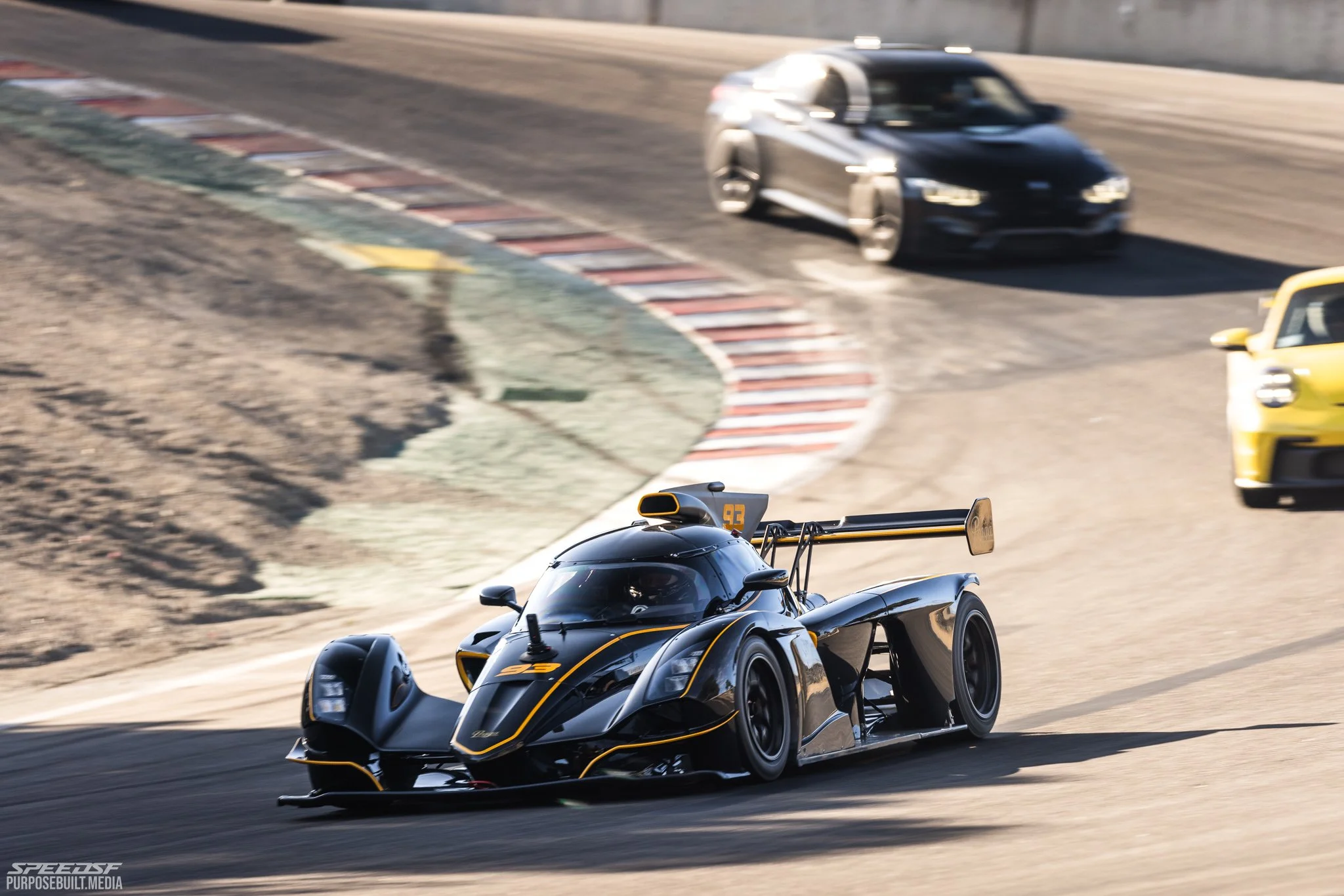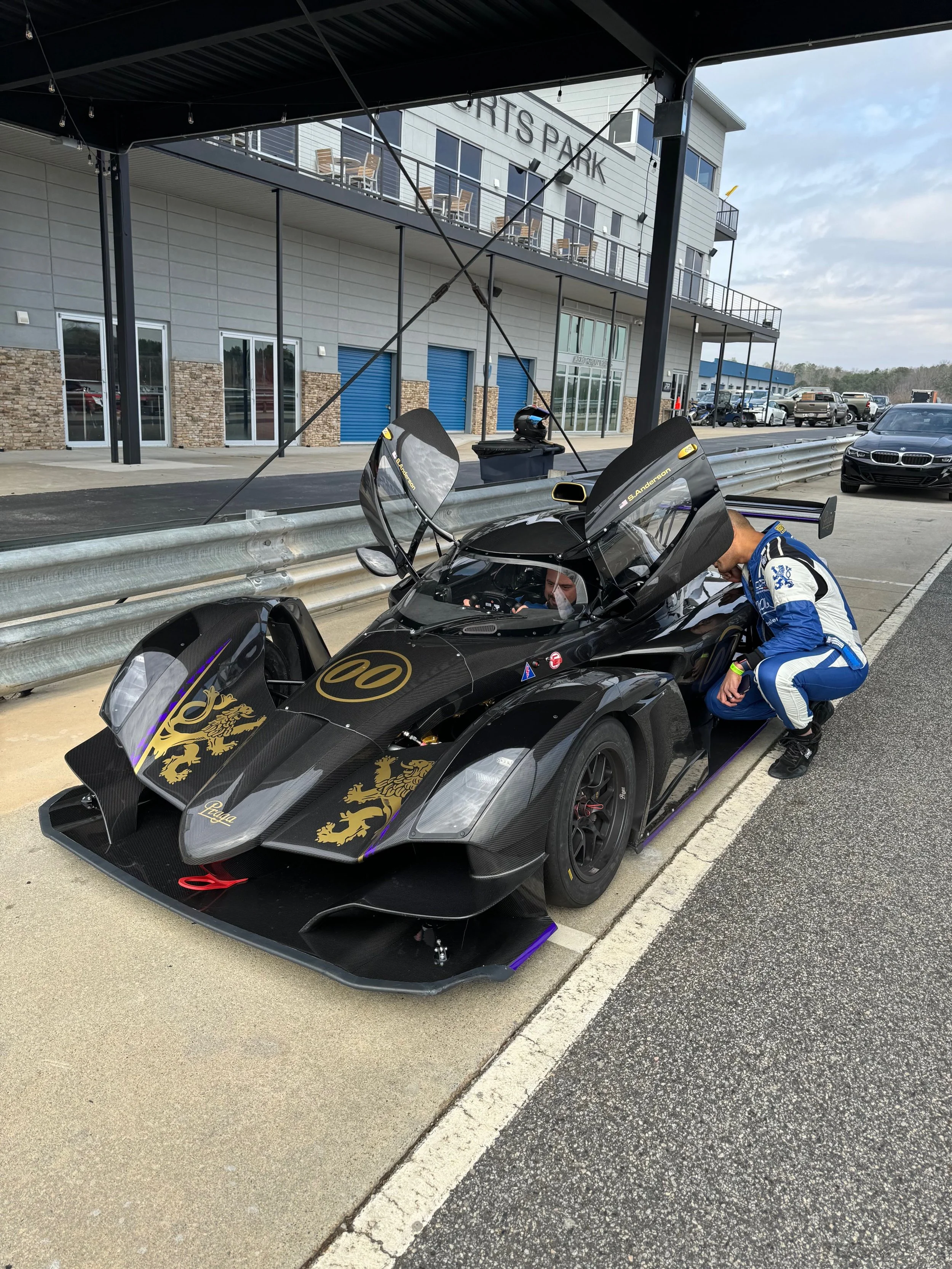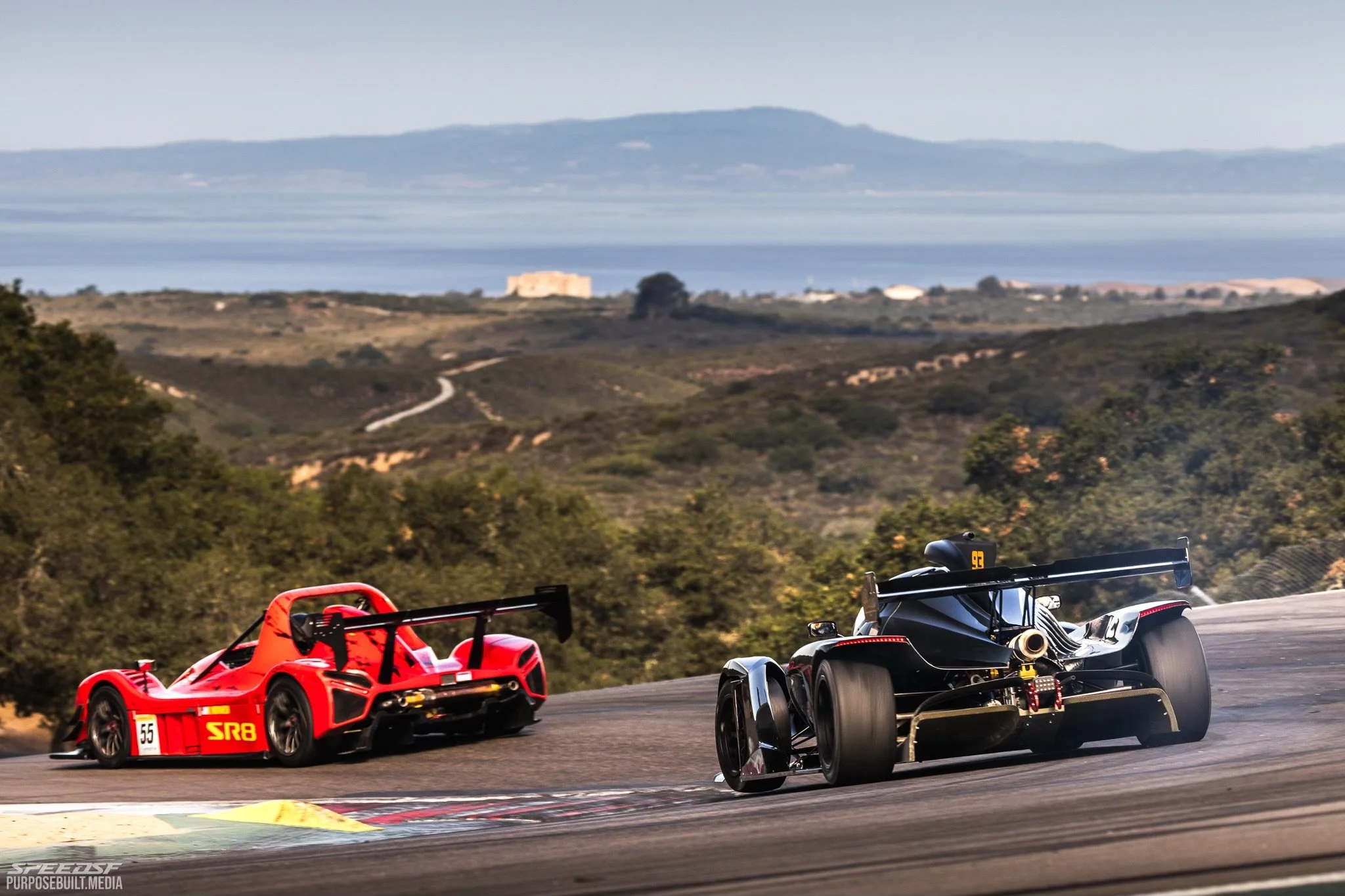George’s Praga R1: Faith Over Fear
Over the last twenty years, George Kibilov’s been able to sample a wide range of popular sports cars and master a few. From his old twin-turbo 300ZX, to Spec Miatas, to a Cayman GT4, and most recently, an ST4 E46 M3, he’s been able to experience most of all that the modern track-tuned production car can offer.
George getting acquainted with the car during his first test at Atlanta Motorsports Park.
There was still one big unchecked box, though: the single-purpose thoroughbred racing car. The sort of performance a car built only to turn laps offers a level of directness and a sense of occasion that production cars, no matter how well-tuned, will struggle to match. The thoroughbred experience, however, isn’t always a pleasant one.
The Praga R1 is an English racing prototype designed to be straightforward, easily maintained, and provide a level of downforce most track rats aren’t familiar with. It was that last trait which George warmed to over time.
“I did not fall in love with it until I drove it the third time, at Laguna, when I started to explore downforce and getting sub-1:30 times. After the second session was over, I realized I did not want to get out of the car. I was addicted.”
Downforce from a “downforce car” is an incredible thing, but it forces the driver to work fairly hard before they’re comfortable using it. Building that trust is not something that’s easy for someone used to heavier cars that are dependent primarily on their mechanical grip to stick.
The range of adjustability isn’t that wide in regards to the aero kit — just a couple rear wing settings to pick and that’s it.
With a car that’s been built around its aerodynamic package like the Praga, it challenges the driver’s trust at the absolute limit. Its diffuser, front tunnels, skirts, weight, tires, and carbon monocoque give it the sort of precision that forces a driver to recalibrate their mind and question their self-preservation instinct. The faster you go, the more grip it provides (to a point).
While that may sound encouraging, it presents a new challenges that are harder to truly enjoy — at least initially. Committing to the turn-in points, trusting the balance in fast corners, and driving up to a limit that increases exponentially are mentally draining processes which ramp up the pucker factor at a similar rate.
The motor is built by the specialist racing division at Alpine Renault, and honed with bespoke engineered Praga parts for increased driveability, power, and torque. In race trim, the 2.0-liter Renault four-cylinder with a moderately sized turbo produces between 290 and 365 horsepower, though a qualifying map will bump power to 395 for one hot lap. Crucially, its 302 lb-ft produced between 3,750 and 6,900 rpm make it much easier to stroke along than some of its bike-powered rivals.
That’s production-based motor fits one of the Praga’s main design aims: easy operation. As exotic as the car looks, it’s been designed to operate without the assistance of a team of engineers. Parts are easy to come by, and their US base in Atlanta is receptive, apparently.
The inboard pushrod suspension comes with Koni two-way adjustable coilovers.
The Hewland JFR six-speed transmission is not quite PDK-precise, but it does shift smoothly enough during downchanges — it does not lock the driven wheels under braking — though its upshifts are violent. It’s designed for easy ratio changes without having to remove the gearbox from underneath the car. A clutch pedal is provided to leave from a standstill and put the car into reverse, but once up to speed, all that’s needed to shift is a pull of the paddle.
Furthermore, this particular car, being the fifth iteration of the Praga R1, most of the major kinks have been ironed out. It’s no longer as sensitive to adjustments in ride height, the steering box has been revised, and the uprights as well as the swaybars have been lightened to provide more direct feedback.
The interior is cramped; pushing a driver with an acute sense of claustrophobia to get out as fast as they can get in. George was one of these drivers, though he found the feeling of being squeezed began to fade after a few laps. “The experience is so immersive it’s hard to not feel energized by the vibrations, the smells, and the sounds. You never forget the vibrations. I can’t even rest my head on the rear bulkhead because it blurs my vision. You get so immersed in it, after a session or two, you’re able to tune out some of that violence,” he explained.
“What’s more concerning is the way it feels like it’s going to break in half when you hit the compression at (Laguna Seca’s) Turn 6. I Had to be reassured by the rep there that day that all those noises there were normal.”
All that discomfort is for a reason. Sharp and surefooted, the car can’t be described as lazy, or as George likes to describe his M3, relaxed. Even so, he wanted more, and so he stiffened the Praga’s rear bar for a little more urgency. A car this sharp must be softened slightly from factory to keep it from rotating like a top at the smallest mistake. This minor tweak provided him with the pointiness he was after. Though thrilling, this presented him with another challenge; the pointier a car gets, the more it drains the driver. “Compared to a GT3 or something like that, the turn-in point arrives about 10% faster. It really provides a kart-like feeling,” he added.
At just 1,500 pounds, it’s very much a full-sized car, but it’s still only two-thirds of a Spec Miata. That fact is never as obvious when spinning, as a firm press of the brakes brings the Praga to an immediate halt. “If I’d spun my M3 in the same corner, I probably would’ve hit the wall.”
As is to be expected with such a sharp-nosed machine, there’s still some left on the table, which George’s happy to admit. When he gets more accustomed to the way the grip builds, he believes he’ll have the confidence to push. “I’ve acclimated to the direction change and it doesn’t feel as dramatic or spiky anymore; I’ve gotten to be able to anticipate it’s movements. If you listen, it does communicate.”
“After driving all kinds of cars from Spec Miata to Ferrari Challenge, nothing even comes close to the feeling of driving the R1. It really is a marvel of engineering.”
But the challenge of reaching the limit is still daunting, as a mistake at the speeds its capable of might well result in a big one. In the event of a major shunt, he’ll be well protected; the Praga’s crash safety is stellar; its bespoke honeycomb carbon fibre monocoque, carbon/Kevlar strengthened flooring, front and rear crash boxes, and side mounted crumple zones will surely keep him safe.
“Unlike my M3, it’s never calming to drive the Praga. The speeds are so high, it’s just a bit scary. You can get into a rhythm pretty fast, actually, but I’m still not 100% confident in it yet. It might need some faith on my part,” he laughed.
That’s fine. After just two weekends at Laguna Seca, he’s already lapped the track in 1:25. Without a doubt, the svelte sports racer hugely capable; even able to chase down a normally-aspirated Radical SR8 which has the legs on it in the straights, but the Praga’s torque makes up for whatever horsepower it lacks in the infield.
“I’m still exploring the limits. I know there is so much more to gain, but driving the car is anti-intuitive at the limit, meaning that you have to slow down much less for the fast corners than what I’ve been used to in 25 years of track driving. Learning to trust the brakes and not overslow the car is not easy. The more you give it, the more it gives you. That’s not something that’s easy to understand.”







